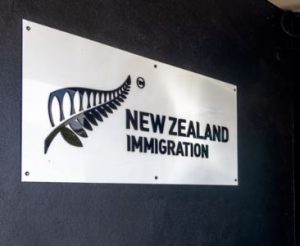New Zealand slashing migration
 New Zealand’s government is making drastic changes to its immigration system to reduce the numbers of migrants arriving.
New Zealand’s government is making drastic changes to its immigration system to reduce the numbers of migrants arriving.
The country’s Accredited Employer Worker Visa system is being redesigned to in a move the NZ government says will help protect migrants from exploitation and address unsustainable net migration.
In 2023, a near-record 173,000 non-New Zealand citizens migrated to the country.
The changes to the work visa scheme include introducing an English language requirement for migrants applying for low-skilled jobs.
A number of construction roles will also no longer be included in the fast-track list of occupatio0ns because of less demand, and the franchisee accreditation category will be removed, the government said.
Immigration Minister Erica Stanford said the changes focus on using the local labour market first, while still attracting high-skill migrants where there are skill shortages.
“Getting our immigration settings right is critical to this government’s plan to rebuild the economy,” she said in a statement.
“The government is focused on attracting and retaining the highly skilled migrants such as secondary teachers, where there is a skill shortage.
“At the same time, we need to ensure that New Zealanders are put to the front of the line for jobs where there are no skills shortages.”
Minister Stanford said having an English language requirement would mean migrants “will be better able to understand their rights or raise concerns about an employer early”.
“These changes are the start of a more comprehensive work programme to create a smarter immigration system that manages net migration, responds to our changing economic context, attracts top talent, revitalises international education, is self-funding and sustainable, and better manages risk,” she said.
For much of modern New Zealand’s history, immigration policy has had a strong labour market focus, aiming to fill current shortages of workers.
Reforms from the mid-1980s and in the early 1990s sought to put more weight on immigration’s contribution to economic growth, but implementation problems – especially difficulties managing the volumes of migrants and concerns about skills mismatches – saw a shift in policy back towards promoting labour market integration.
Net migration has always been sensitive to New Zealand’s economic circumstances and relative economic performance, with outflows during downturns.
Since the 1960s, this country has experienced both high inward and outward flows of people, with large-scale emigration of New Zealanders, primarily to Australia.
Over the past few decades, New Zealand has had some of the highest per capita rates of both inward and outward migration in the OECD.












